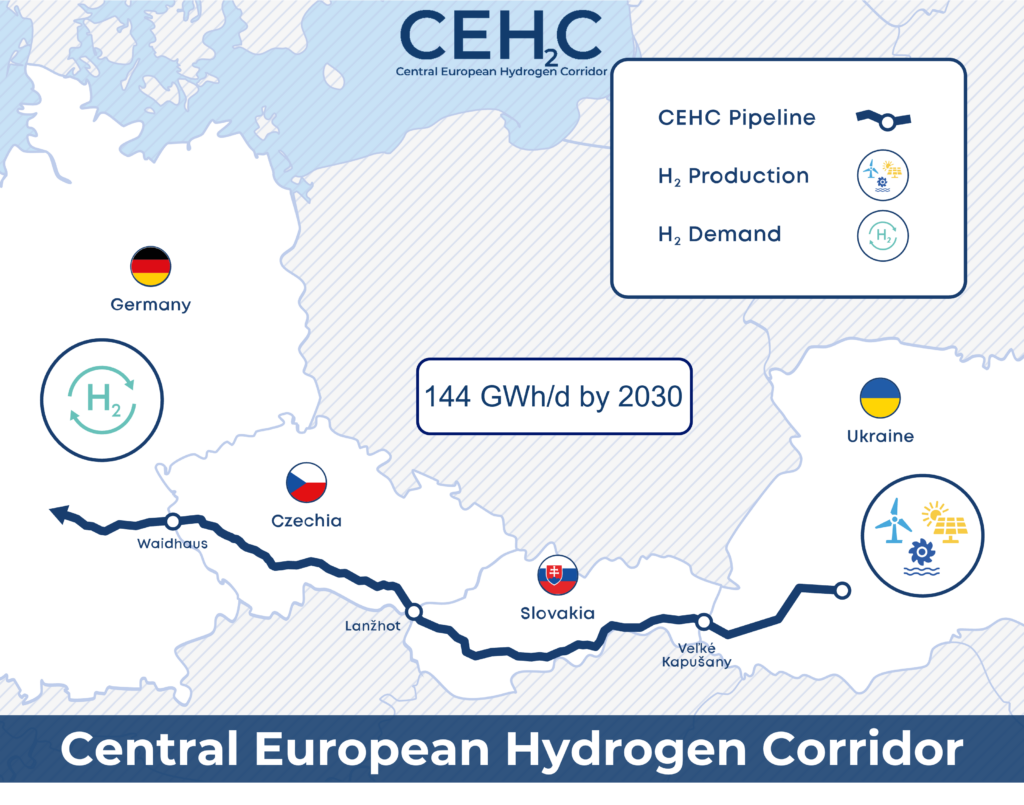By: GTSOU (Ukrainian TSO), EUSTREAM (Slovak gas TSO), NET4GAS (Czech gas TSO) and OGE (German gas TSO).
The Central European Hydrogen Corridor (CEHC) aims to create a hydrogen “highway“ in Central Europe for transporting hydrogen from major hydrogen supply areas in Ukraine to hydrogen demand clusters in Germany. The hydrogen corridor will also enable hydrogen transport between hydrogen production facilities and hydrogen consumers in the Czech Republic and Slovakia.
The project is promoted by four gas TSOs: GTSOU (Ukrainian TSO), EUSTREAM (Slovak gas TSO), NET4GAS (Czech gas TSO) and OGE (German gas TSO).
The first preliminary results of the pre-feasibility study confirm that most of the relevant natural gas infrastructure can be repurposed to carry 100% hydrogen. With an initial technical capacity of 144 GWh/d green hydrogen will be transported via repurposed pipeline combined with some targeted investments in new dedicated hydrogen pipelines and compressor stations. The project is expected to be commissioned by 2030.
The project could make a significant contribution to REPowerEU’s target of importing 10 million tonnes of green hydrogen into the EU by 2030. At full load, the CEHC corridor could transport up to 1.5 million tonnes of hydrogen per year.
The CEHC initiative is open for cooperation with hydrogen producers, large hydrogen consumers and other gas infrastructure companies to help facilitate the production and consumption of hydrogen in Central Europe.
















































